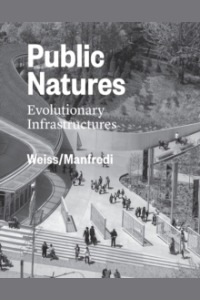
Opus 82 : Bodensee-Wasserversorgung, Sipplingen
Bok av Andreas Schwarting
Autumn 1958 marked the launching of the Bodensee-Wasserversorgung (Lake Constance water supply), an infrastructure project whose largest part is underground, hidden from view. Even in the first phase of the project, 2160 litres of water per second were taken from Lake Constance at a depth of roughly 60 m, treated on Sipplinger Berg and transported over hundreds of kilometres of pipeline through the Swabian Alb to the greater Stuttgart area. What is remarkable about this project, however, is not only the technological challenge of a combination of the lake-water treatment and the overland water pipeline, but particularly the special quality of the design of the visible parts of the waterworks, a result of the collaboration of engineers, architects, landscape designers and artists. Hermann Blomeier, who had settled in Constance in 1932 after graduating from the Bauhaus Dessau under Ludwig Mies van der Rohe, was commissioned with implementing the Sipplingen pumping station following a competition and, with functionally and transparently designed buildings, created a counterpoint to the expressive landscape of Lake Constance that was as restrained as it was confident. The treatment plants on Sipplinger Berg, built by a team comprising Blomeier and the architect and academic Gunter Wilhelm, from the 'Quelltopf' (source pot) and the filter basins to the clean-water reservoir, exactly meet functional requirements and at the same time impressively illustrate the technical processes. The long distance travelled by the water is accompanied by seemingly subordinate buildings designed by architect Wolf Irion, subtly integrated in the landscape as a kind of wayside chapels, housing the pipe-rupture safety devices and line valves. The high quality of the design is evident not only in the buildings, but also in the work of landscape architect Walter Rossow and of visual artists Hans-Dieter Bohnet, Martin Matschinsky and Brigitte Matschinksy-Denninghof. Andreas Schwarting is professor of architectural history and architecture theory at the Hochschule Konstanz. His research has focussed particularly on 20th-century architecture, its reception and historiography, and on specific issues of conservation and maintenance. His publications include the monograph on Walter Gropius Dessau-Toerten estate, and he was instrumental in the publication of the Stiftung Wustenrot on the preservation of contemporary buildings. He was appointed by the International Council on Monuments and Sites (ICOMOS) to monitor the UNESCO world-heritage sites of the Bauhaus in Weimar and Dessau.
Visa pris inkl. frakt Inkl. frakt
Bodensee-wasserversorgung, Sipplingen
341 kr
Finns i lager
Opus 82 : Bodensee-wasserversorgung, sipplingen
379 kr
Finns i lager
Opus 82 : Bodensee-Wasserversorgung, Sipplingen
419 kr
Finns i lager







